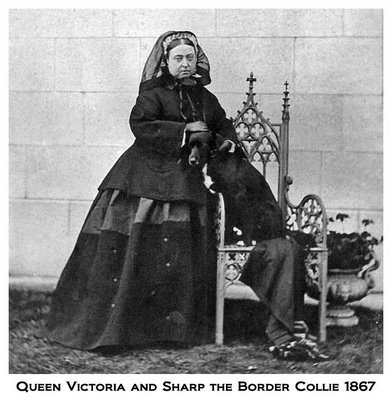Bereavement Requires Time & Oscillation
Culture, spirituality, ethnicity, race, and religion can shape a family’s values and beliefs—forming the foundation of one’s worldview. From within this system, children observe family members participating in loss rituals. These early experiences can influence how we respond to loss in the future.
In this blog series on grief, I discuss types of complicated grief and how counseling can help a person struggling in their time of mourning. Previously, I have written about disenfranchised grief and ambiguous loss. This week, we look at an adaptive response to loss known as Dual Processing. Identified in 1995 by Margaret Stoebe and Henk Schut, this process illustrates how one oscillates between loss-oriented tasks and restoration-oriented tasks during bereavement.
Living within the scope of grief, the body, mind, and spirit seem to recognize unconsciously that one cannot remain perpetually in restoration-oriented tasks (e.g., bills, death certificates, denial of emotions and feelings, learning new things) for that would be ignoring, suppressing, or denying one’s emotions. Likewise, the heavy weight of loss and mourning would be emotionally, physically, and spiritually incapacitating, if one were to remain in a stasis of grief-oriented tasks (e.g., crying, isolation, sadness, yearning, avoidance of every day responsibilities).
In this post, I contrast historical mourning rituals with rituals in 21st century America. The changes in mourning—some drastic and discombobulating—can be mitigated through Stoebe and Schut’s Dual Processing Model.
What We Have Lost in Mourning Rituals
During Queen Victoria’s reign, her husband Prince Albert died in 1861. She publicly mourned his death for 40 years, which ended only upon her death in 1901. British and American Christian society followed her mourning rituals and adapted scripted mourning customs.
Widows of certain socioeconomic classes were expected to mourn a minimum of 2.5 years. Immediately after the death of her husband, she was to wear black clothing and a black veil whenever in public. During full-mourning, she continued to wear black, but she could accent her clothing lace and cuffs of lighter hues. During the final stage of mourning, known as half-mourning, she was allowed to wear gray and purples.
Other mourning time periods were set according to the relationship of the female mourner: Death of a child, one year; death of a parent, one year; death of a sibling, six months. Widowers’ mourning periods were only three months, exhibited by wearing black armbands, badges, or rosettes.
First Lady Jackie Kennedy attending the funeral of her husband, President John F. Kennedy in 1963 (PIGISTE/AFP/Getty Images)
Acceptance to mourn, no more
During the latter half of the 20th century, our society moved away from Victorian era mourning practices. A generous time for mourning was withdrawn from social norms, and recognizing a person one’s own unique time to grieve and mourn was no longer a given.
Today, if you are fortunate to work for a company that offers bereavement time off, you probably receive, on average, 3-5 days unpaid leave for the death of a close family member. As if one has had the chance to grieve in such amount of time and return to work bright-eyed and bushy-tailed. Indeed, work productivity, focus, decision-making, and safety all suffer, regardless of what type of work one does. Joel Brown, Managing Partner at Friedman & Brown, LLC attributes a loss of over $100 trillion annually in 2017 dollars due to grief in the workplace.
Despite the increase in family members scattered across the country, if not the world, bereavement airfares of yesteryear are no more. As Chris Raymond of the website, Funeral Help Center, notes, it is often more affordable to use a third-party travel website to find cheap last minute airfares than to contact an airline directly to request a discounted rate, because the airline will often quote a discount on the full fare. I recently heard that a “bereavement” rate from North Carolina to Florida was $1,200 RT—“Skygouging” at the expense of a person’s grief and suffering, to be sure.
pressures to “be Okay”
Today, in many American sectors the marking of grief time is often connected to the last formal public event honoring the deceased. The Christian tradition often includes an opening wake, followed by a funeral, eulogy, burial, and luncheon. At this time, extended friends and family share stories, laughter, and tears with more immediate family, as they together recount memories of the deceased. This extended circle eventually hugs goodbye and returns to their immediate families, grateful that they were not the ones who had just lost a parent, grandparent, spouse, or child.
But what about the closest members of the deceased’s circle? How do they fare after everyone returns to their lives?
Many grief clients come with stories of well-intentioned friends and family members who encourage them to “move on” after the funeral; but their well-intentions can often feel too soon, too forced, or too unsupportive. This is particularly so, when your loss is ambiguous or disenfranchised.
For many, the following days, weeks, and months remain a period of deep mourning. This period, called “Jahrzeit,” is a Yiddish word describing the 12-month period of mourning that occurs after a death and includes all the “firsts” without the deceased, e.g., birthdays, anniversaries, changing of seasons, holidays, etc. Like a rollercoaster car with a broken wheel, every time the car edges toward another emotional height (i.e., an important day), everything falls apart with the raw emotions of fresh grief and loss.
In sum, grief is not a switch that can be turned off at the end of three days.
Ritual Closure Vs Emotional Closure After Death of a Loved One
While cremation rates in the US continue to be lower than our Canadian neighbors, at 59% and 74.4% respectively, cremation continues to rise as an option for many families. In fact, cremation rates are expected to reach 65.2% in the US by 2027.
There are pros and cons to cremation, depending on your family traditions, economics, the environment, emotional regulation, and religious and/or spiritual considerations.
As a grief counselor, the disadvantage I most often see in clients is a lack of ritual closure. This is not the same as what some describe as “emotional closure.” Ritual closure pertains to recognition and acceptance of the death, while engaging in a timely ritual that honors and celebrates the deceased’s life.
Emotional closure, in contrast, is no longer considered a task in grief counseling. In the past, one was said to have closure after a burial, i.e., they are expected to “move on” with their lives.
Today, grief counselors encourage people to accept their loss while identifying ways to continue bonds with the loved one. It is not moving on; it’s finding and fostering new ways to stay connected with the deep love one shared with the deceased, such as linking objects.
Linking Objects are items that remind you of loved one and have a value-added benefit of providing comfort and strength to you in times of sadness.
While cremation can remove the economic barriers to short-notice travel, limitations on bereavement time off, and the pressures of pulling a major life event together in a short amount of time (some religions, such as Judaism, Islam, and Hindu, require burial within 24 hours), the limitless nature of cremation can also complicate one’s grieving process.
For many, there is indecisiveness in what to do with the cremains. If the loved one did not leave specific instructions, family members may feel stuck in deciding, where, when, and how to handle the cremains.
If your family is experiencing this, you are not alone. According to the Cremation Association of North America’s database, an estimated 2 million urns in funeral homes across North America are waiting to be collected.
Feeling stuck can also be an emotionally and spiritually jarring for those mourning a loved one. The longer a family waits to handle cremains, the more intense feelings of anxiety, yearning, and sadness can grow.
I encourage my clients to discuss openly one’s own wishes for the handling of their cremains as a way to “give permission” to other family members to share wishes. I also recommend ongoing family communication that is focused on concrete plans such as dates, locations, possible options for distributing the cremains, and a lead person to coordinate efforts.
Life After Death: Loss-Orientation & Restoration- Orientation
These details and tasks are part of restoration-oriented tasks: Bringing a sense of order to the orderless; a sense of meaning to the meaninglessness; a sense of responsibility to the wandering of mourning.
During the grieving process, an adaptive client will oscillate between tending to these loss-oriented tasks and restoration-oriented tasks. This Dual Process Model of Coping with Bereavement (Stroebe and Schut, 1999) can be helpful in describing the grieving process to clients and in recognizing areas where they may need additional support.
Stoebe and Schut recognized the importance in zigzagging back-and-forth, intentionally and unintentionally, because remaining on either end of the pendulum would be restrictive and isolating, constrictive and obstructive.
The model also described the importance of intentionality in the grieving process. We need to engage in “dosing our grief” because at times either end can become too debilitating. Respite from grief work can be found in learning how to call and schedule the eaves to be cleaned for the first time after a spouse dies.
Respite from paying bills and going places alone can be found in snuggling in your den watching a favorite romance movie that you and your partner watched together—the tears can be cathartic, while also continuing your bond with them. These acts are integral to developing a healthy coping style to your loss.
For clients experiencing maladaptive grief, they may find themselves unable to move back and forth from the emotional waves of grief to the reality of living in the absence of the loved one. When clients are debilitated from reconnecting with life due to intense, prolonged yearning, they are exhibiting signs of complicated grief.
Overcoming complicated grief: Be the Buffalo
Talking with a certified grief counselor can provide you the space to explore feelings, longings, regrets, unfinished business, and sorrow. Becoming stuck on either end of the spectrum can lead to complicated grief. To help clients experience and embrace the emotional storms of grief, I like to use the metaphor of the American buffalo.
While domestic cattle try to outrun a storm, buffalo instinctually know they must face the storm head on. Buffalo suffer less, conserve energy, and spend far less time in the freezing rain, drizzle, high winds, and snow. In contrast, cattle suffer longer, exert more energy, and spend more time in the chaos of a storm.
Franz Marc, “Bison in Winter (Red Bison),” 1913
It is my privilege to help my clients #bethebuffalo.
Lisa A. Rainwater, PhD, MA (couns), LCMHC, CCMHC, CGP, CT is the owner of Rainwater Counseling in Winston-Salem, North Carolina, where she provides depth psychotherapy and relational attachment and grief counseling to individuals and couples. She earned a master’s in German Studies from the University of Oregon; a master’s in Counseling from Wake Forest University; and a doctorate in German and Scandinavian Studies from the University of Wisconsin-Madison. Lisa is a Certified Thanatologist through the Association of Death Education and Counseling and is seeking certification in Grief Therapy as Meaning Reconstruction at the Portland Institute for Loss and Transition. She is currently enrolled in a year-long program, Jungian and Post-Jungian Clinical Concepts, at the Centre of Applied Jungian Studies.
Notes
[1] Tyrrell P, Harberger S, Schoo C, et al. Kubler-Ross Stages of Dying and Subsequent Models of Grief. [Updated 2022 Nov 19]. In: StatPearls [Internet]. Treasure Island (FL): StatPearls Publishing; 2022 Jan-. Available from: https://www.ncbi.nlm.nih.gov/books/NBK507885/







